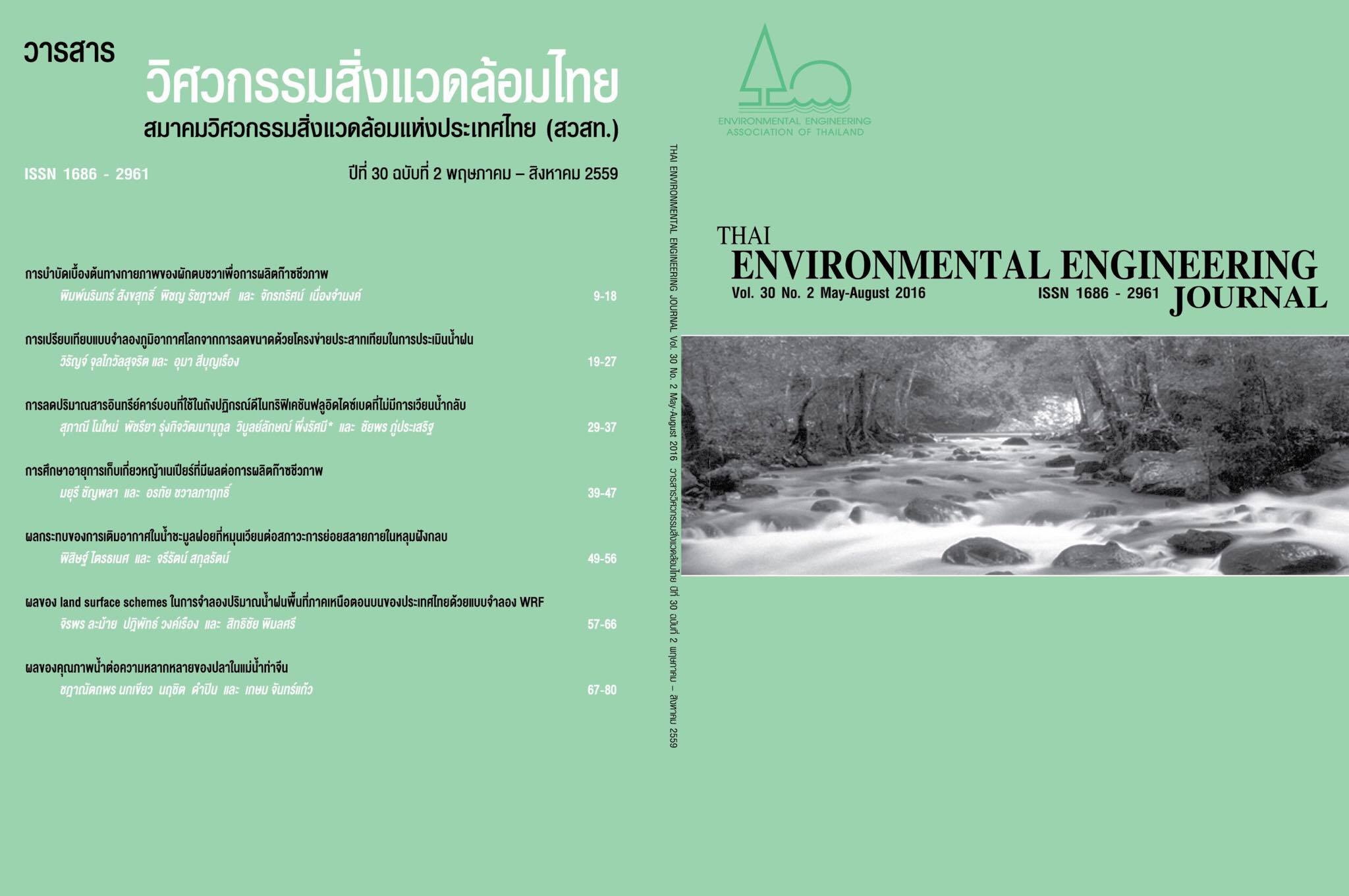Influence of Land Surface Scheme on Rainfall Simulation over Northern Thailand using WRF Model
Main Article Content
Abstract
Atmosphere-land interactions are important processes to the global climate system. Land surface scheme in numerical weather prediction models provide heat and moisture flux between land and atmosphere that are significant for rainfall formation. Precipitation in heavy rainy month in normal climate year of September 2013 was simulated to examine the effects of land surface scheme over Northern Thailand using the Weather Research and Forecasting Model (WRF) Version 3.4. Four different land surface schemes were tested: The Dudhia 5-layer thermal diffusion (SLAB), The Noah LSS (Noah), The RUC LSS (RUC) and Noah-MP (multi-physics) Land Surface Model (Noah-MP). The simulated results were evaluated with 99 rain gauge stations in Northern Thailand. The results show that the simulated rainfall is sensitive to different land surface scheme with relative differences of 23-62%. Simulated precipitation using SLAB is the best performance in comparison with other schemes. Monthly average of simulated precipitation of SLAB is more close to the observation than simulated rainfall using Noah RUC Noah-MP and No land surface scheme (No LSS). The study result is useful for model configuration of appropriate parameterization in weather simulation in this region.
Article Details
References
[2] Changhai Liu, et al. 2010. Comparison of two land surface schemes in week-long cloud-system-resolving simulations of warm season precipitation. METEOROL ATMOS PHYS (2010) 107: 9-15.
[3] Chen Liang, et al. 2012. A Comparison study of two land surface schemes in WRF Model over Eastern China. J Trop Meteorol Vol.18 No.4 pp: 445-456.
[4] A.P. Singh, et al. 2007. Influence of different land-surface processes on Indian summer monsoon circulation. NAT HAZARDS (2007) 42: 423-438.
[5] Jiming Jin, et al. 2010. Sensitivity Study of Four Land Surface Schemes in the WRF Model. ADV METEOROL Volume 2010.
[6] Thara V. Prabha, et al. 2011. Role of land surface parameterizations on modeling cold-pooling events and low-level jets. ATMOS RES Volume 99, Issue 1, pp: 147-161, 2011.
[7] Rungsun Apakupakul. 2547. Introduction to meteorology. Bangkok. Publisher of Chulalongkorn University. (in Thai)
[8] Ruethai Pangwatana. Cloud (Chapter 1). Search on September 26, 2559 From http://earthscience .ipst.ac.th/? p=57846 (in Thai)
[9] Climate & Global Dynamics Laboratory (CGD). Surface Energy Fluxes. Search on September 26, 2559. From www.cgd.ucar.edu/tss/aboutus/staff/ onan/ecoclim/.../Chapter07.pdf. (in Thai)
[10] Churaiporn Kaewtip. 2549. A Spatial Database of Rainfall for Crop Simulation Model. Chiang Mai, Chiang Mai University. (in Thai)
[11] Bundit Prommawong. 2530. Estimating rainfall by Kriging interpolation. Water Resources Engineering. Khon Kaen University. (in Thai)
[12] Phakawan Ratnamhin, et al. 2557. The simulation of rainfall over complex terrain in upper Northern Thailand using WRF model. 13th Conference on environmental. 26-28 March 2557. (in Thai)


